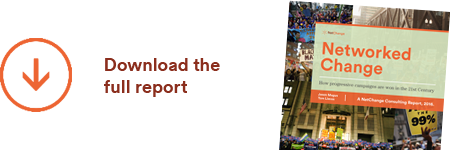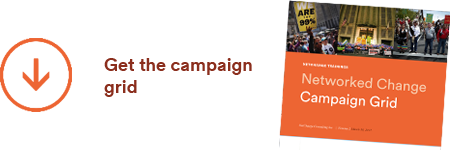The Wall Street Journal today has a fantastic story on how younger people – powered by the web – are changing the face of the charitable world. In A New Generation Reinvents Philanthropy, WSJ profiles 8 new style charities that are engaging new donors in new ways. These charities are often powered by web tools and more importantly display the best of "web thinking".
Some of the newer Web-based nonprofits, such as DonorsChoose and Kiva, are attractive because contributors say they allow them to connect directly with their recipients. Donors or lenders can hand over money directly to, respectively, teachers and students in urban public schools or individual entrepreneurs in developing countries, rather than sending a check that ends up with an abstract recipient.
"You can donate money to a charity, but it seems like it just goes into a pile and you never know what really goes on there," says Mr. Alamo, the Kiva lender. "With Kiva, you just pick someone out and lend to them directly and watch what they do and how they succeed. That was the main appeal."
The success of these new fundraising tools – while still small in pure dollar figures when compared to traditional forms of fundraising like direct mail – points to an important and expanding trend that I see in my work with clients and talk about whenever I get the chance. They can be summarized by the following line of thinking.
Web 2.0 tools, businesses, and campaigns take advantage of these underlying design principles:
- Participation architecture – design for meaningful involvement
- Sharing and Collaboration – with customers, partners, competitors
- Open systems, campaigns, and cultures
- Network effects – the more people use something, the stronger and smarter it gets; this is sometimes known as the wisdom of crowds
- Individual Freedom and Control – allowing users to do what they want, when they want it, and see impact
The rapid rates of adoption and buzz around Web 2.0 software and businesses are no fluke or passing fancy – I see them being driven by larger cultural trends which in keynotes I summarize by the statement "traditional marketing (and fundraising) is dead". Which is a provocative thing to say and, of course, not the full picture, but I think we can all agree that our standard, comfortable ways of communicating with the outside world are losing their potency. Why? Because:
cultural trends which in keynotes I summarize by the statement "traditional marketing (and fundraising) is dead". Which is a provocative thing to say and, of course, not the full picture, but I think we can all agree that our standard, comfortable ways of communicating with the outside world are losing their potency. Why? Because:
- We live in a world with too many choices for everything. How many others do what you do?
- Attention is now the most scarce resource
- People expect more: from our organizations, institutions, and each other
- People see more: they have more information, more knowledge, and see more interconnections among issues and ideas
- People feel more: the impacts of a hurting and out of balance world
- They crave meaning in their lives, work, and relationships
- And they want to have impact: they want to make a real difference
From where I sit these are all very positive trends. Organizations who keep an eye on them, and look long and hard at strategies that evolve their own thinking and behaviours to adjust to this changing world, will do well in the future. I’m excited for where this is taking us as a culture, and love working with innovative leaders who are embracing the change and living in new ways. May we see more great stories in the coming years!









